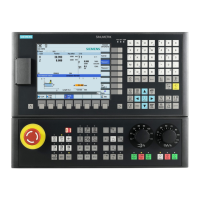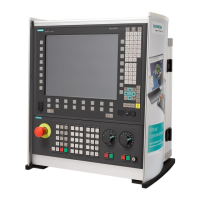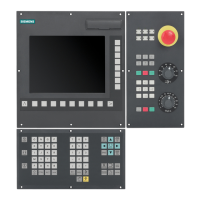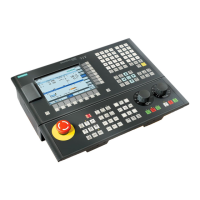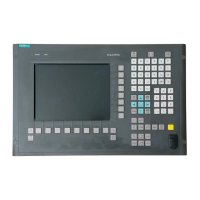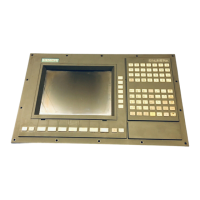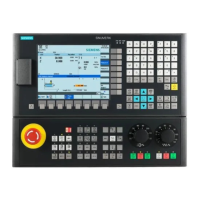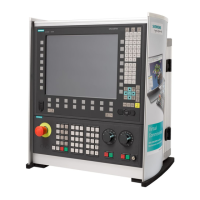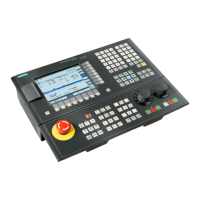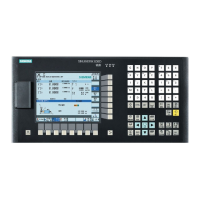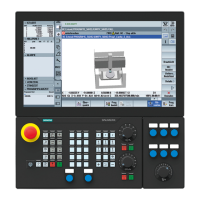Z2: NC/PLC interface signals
18.9 Punching and Nibbling (N4)
Extended Functions
892 Function Manual, 03/2013, 6FC5397-1BP40-3BA1
DB21, ...
DBX3.2
Stroke suppression
Edge evaluation: Signal(s) updated:
Signal state 1 or
edge change 0 → 1
This signal simply prevents execution of the stroke. The machine traverses anyway.
The automatic path segmentation remains active if it is already activated.
Only the signal "Stroke initiation" is suppressed.
The machine traverses in "stop and go" mode.
The step length is defined via the path segmentation.
1 signal: Stroke suppression is active.
Signal state 0 or
edge change 1 → 0
0 signal: Stroke suppression is not active.
DB21, ...
DBX3.3
Delayed stroke
Edge evaluation: Signal(s) updated:
Signal state 1 or
edge change 0 → 1
A "Delayed stroke" can be activated via this signal. This corresponds in function to the
programming of PDELAYON. Other PLC signals not corresponding to the standard are not evaluated
in the NCK. With the exception of the manual stroke initiation, the evaluation of signals is limited to
PON active.
1 signal: Delayed stroke is active.
Signal state 0 or
edge change 1 → 0
0 signal: Delayed stroke is not active.
DB21, ...
DBX3.4
Stroke inoperative
Edge evaluation: Signal(s) updated:
Signal state 1 or
edge change 0 → 1
The NC reacts to this signal by initiating an immediate movement stop. An alarm is output if any
other movement or action needs to be interrupted as a result of this signal.
In physical terms, the signal is identical to the signal "Stroke active" for the CNC, i.e. the system is
wired in such a way that the two signals are taken to the same NC input via an AND gate.
1 signal: Stroke inoperative (corresponds to the signal "stroke enable").
Signal state 0 or
edge change 1 → 0
0 signal: Stroke operative (corresponds to the signal "stroke enable").
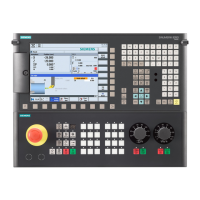
